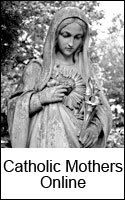Another reason why Father Ubel rocks and I'm not going to win the ugly vestment contest...
From his Pastor's Page of December 2, 2007:
Noted columnist and inveterate baseball aficionado George Will once remarked that one's appreciation of baseball is directly proportional to one's knowledge of the game. The more deeply we understand the game's intricacies, the more we enjoy it. While I would not venture to make a direct comparison with the Catholic Faith (Jesus' word in Mark 10:14 "suffer the children to come unto me," come to mind) there is a more general truth in what he said. The more we understand about our faith, the more likely we are to treasure its richness. One such area concerns the Liturgy.
Without question, faithful Catholics attend Mass primarily in order to worship God, be nourished by His Word in Scripture, and to receive the Body of Christ. Nevertheless, various "externals" serve to enhance this process, including the rich history of the liturgical seasons, Sacred Art and Music, and the Latin language (all of which have been treated in previous columns). One aspect about which I have not yet written centers on liturgical vestments, their history and symbolism. I may be treading in murky waters here, for I surmise that some very faithful Catholics are not particularly interested in such minutiae. If you count yourself in that number, I hope you reconsider!
If the faithful laity "put on their Sunday best" for Church, should not the clergy do the same? We are blessed with beautiful vestments at Saint Agnes, many of which have interesting histories, including some that have been used in Hollywood films (last Sunday's Gold vestments at the Latin 10:00 Mass appeared in a Robert DeNiro film!), or literally rescued from the trash bin in the confused aftermath of Vatican II! The General Instruction of the Roman Missal states. "the sacred vestments should also contribute to the beauty of the sacred action itself" (#335). The GIRM continues: "It is fitting that the beauty and nobility of each vestment derive not from abundance of overly lavish ornamentation, but rather from the material that is used and from the design" (#334).
It may well have been St. Augustine (5th century), who was the first to use the word casula in reference to clerical dress. From this word we derive chasuble, the main vestment proper to the priest at Mass. Prior to that it was not employed solely for liturgical use, was made of good cloth and often reserved for the outdoors. In the 6th century the casula had developed into the priestly vestment used at Mass, and by the 7th century we see references to vestments in Church documents. The Fourth Council of Toledo (633 A.D.) contains a canon that specifies certain vestments pertaining to bishops, priests and even deacons. The chasuble was likened to a "little house," (casa, cottage), and covered the wearer entirely. It kept the priests warm during cold European winters in unheated churches, but in the summer, I suspect it was a definite form of penance!
The earliest vestments were ample, full and made of varied materials (linen, wool, and then silk), often in one piece. I still recall my 2006 visit to the Basilica of St. Vitalis in Ravenna Italy, which contains the best-preserved 6th mosaics in all of Christendom. There one can see the figure of Ravenna's Bishop Miaximian, proudly standing right next to the emperor Justinian whom he could thank for building the basilica. The bishop was arrayed in beautiful flowing golden silk vestments, complete with the same larger flowing pallium brought back into use by Pope Benedict XVI. This is the woolen "Y" shaped garment given by the Pope to Archbishops and derived from lambs reared from the convent of Saint Agnes in Rome. Provided I have not put you all to sleep, in the next installment I will treat the various styles and colors of vestments.
-------------------------
No, Father, we are not asleep and eagerly await your next installment!
02 December 2007
Subscribe to:
Post Comments (Atom)



















No comments:
Post a Comment